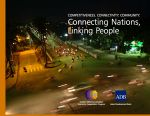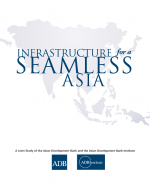Mobilizing Private Capital for Infrastructure in the Greater Mekong Subregion
Mekong governments need to create an enabling environment for public-private partnerships in infrastructure. Here are 4 ways to get the job done.
Mekong governments need to create an enabling environment for public-private partnerships in infrastructure. Here are 4 ways to get the job done.
The Lao People’s Democratic Republic is operating its first dry port in Savannakhet province, where it is strategically positioned along the Greater Mekong Subregion East-West Economic Corridor, at the mid-point between the nearest Vietnamese seaport of Danang, and Thai ports in Bangkok and Laem Chabang.
Special economic zones combined with economic corridors are a potent force for prosperity in the Greater Mekong Subregion.
In Kunming, governors and key local government officials from provinces along the borders of the Greater Mekong Subregion came together on 10 June 2017 to discuss further cooperation.
The Myanmar government recently approved a project that will ensure the completion of the Greater Mekong Subregion East-West Economic Corridor, which stretches from Danang, Viet Nam to Yangon, Myanmar.

This publication outlines the GMS Economic Cooperation Program (GMS Program) which was initiated in 1992 with the support of ADB. It aims to promote economic cooperation among Cambodia, People's Republic of China (PRC), Lao People's Democratic Republic (Lao PDR), Myanmar, Thailand, and Viet Nam.
The GMS Program covers nine priority sectors: transportation, telecommunications, energy, environment, human resource development, trade, investment, tourism, and agriculture.

Flagship study that analyzes major challenges in developing regional infrastructure, particularly transport and energy through regional cooperation towards a seamless Asia.
MANDALAY, MYANMAR (28 June 2012) - Ministers and senior government officials from the six Greater Mekong Subregion countries met today to discuss ways of expanding economic corridors to better facilitate the movement of people and products around the subregion.
MANILA, PHILIPPINES (8 December 2016) – The Asian Development Bank has approved a $450 million investment program to promote cross-border economic activities between Guangxi Zhuang Autonomous Region of the People’s Republic of China and northern Viet Nam. The program will focus on developing the North-South Economic Corridor under the Greater Mekong Subregion Cooperation Program.
KUNMING, PEOPLE’S REPUBLIC OF CHINA (11 June 2015) – Government ministers and senior officials attending the Greater Mekong Subregion Seventh Economic Corridors Forum today agreed on measures to promote the development of economic corridors, facilitate cross-border transport and trade, and enhance cooperation and private sector participation.